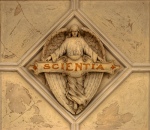It has long been understood that worker honey bees, Apis mellifera, coordinate foraging for nectar using a system for dances. The best understood of these dances is the ‘waggle dance’. The waggle dance is preformed by a worker who has recently returned to the hive from a lucrative nectar source. The bee gives off an olfactory cue that tells her hive-mates to pay attention. The worker then begins to move in a rough figure-eight, vibrating her abdomen at high frequencies between the loops. The angle and duration of the vibration convey the direction and distance to a promising nectar source.
Check out this video about the waggle dance:
Honey bees also preform a tremble dance that lets workers know that a nectar-laden forager needs to be offloaded, and another dance, originally though of as a ‘begging dance’. This dance is preformed by workers that approach waggle dancers and either butt heads or climb on top of the waggler before delivering a brief 380 Hz abdominal vibration. It was originally thought that this dance was a way of begging for nectar from a laden dancer. However, research has shown that this dance does not precipitate nectar exchange.
New research has shown that the begging dance is in reality a ‘stop dance’, that tells a waggler to stop sending others to a perilous location. The research, published in Current Biology, showed that the stop dance is caused by predator and conspecific attacks on foragers. Workers returning from this dangerous location seek out waggle dancers that are sending others into danger. The stop dance decreases waggle dancing and recruitment to that location.
This stop dance is especially interesting when considered within the superorganism concept of eusocial insects. In this view, the entire colony functions as a single organism; with different colony classes acting as different cell types, and individuals analogous to single cellular units. Previously, only positive recruitment signals had been modeled at the superorganism level. Now, the stop dance adds the first example of a negative feedback signal in a superorganism. The collective interplay of waggle and stop dancing by many members of a hive therefore results in a self-organizing labor allocation system similar to those that exist at the cellular level.
References:
-
Nieh, J. (2010). A Negative Feedback Signal That Is Triggered by Peril Curbs Honey Bee Recruitment Current Biology, 20 (4), 310-315 DOI: 10.1016/j.cub.2009.12.060
















